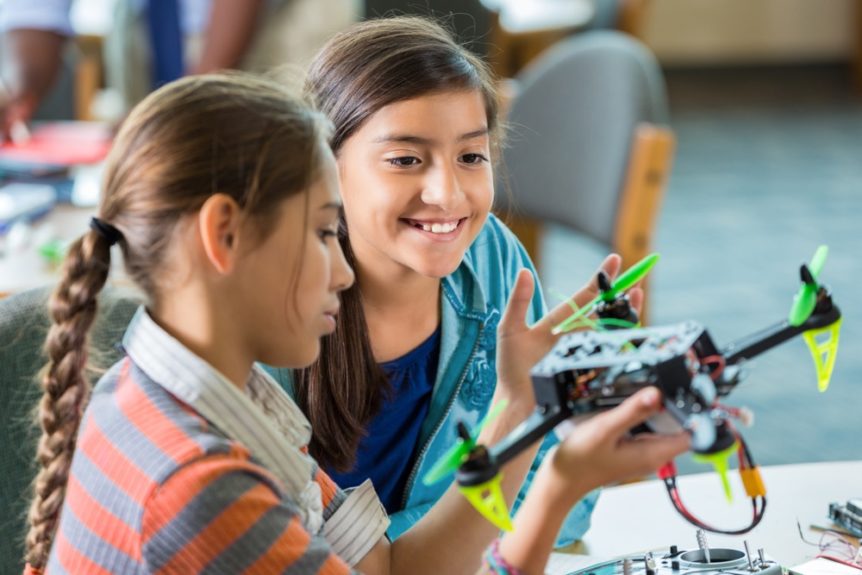Imagine a world where your school actually had the resources it needed to pursue all of the activities and learning opportunities it wanted for its students. A world where you wouldn’t have to consider increased requirements or eliminating opportunities due to budget constraints.
This may seem like some sort of educational wonderland – a dream that’s unlikely or unattainable.
But it’s not, and the solution may be closer than you think.
You likely remember when before- and after-school programs began to climb to prominence in the 1980’s and served as a “daycare” of sorts, allowing parents to get to work before school started and pick their kids up after work ended. A solution prioritizing a parent’s schedule. But as the trend grew and schools saw tighter constraints, these programs morphed and changed. By the 1990’s and 2000’s, these types of programs gradually expanded what they offered, adding homework support and enrichment classes. However, given the early childhood roots of these organizations, both were disjointed and disconnected from the everyday realities of the school.
But now before- and after-school programs have a unique opportunity to partner with schools for maximum impact and to help schools achieve their mission. But to achieve this impact, the next generation of programs must move beyond traditional models to provide expanded services that are connected to the school community. These programs must embrace an expanded responsibility to provide programs that both compliment and supplement the school curriculum by delivering a connected cadre of activities that include homework support, tutoring, enrichment activities, STEAM, and many more, while focusing on the skills students need to meet the new, innovative economy:
- Collaboration
- Critical Thinking
- Creativity
- Communication
Capitalizing on Those Extra Hours
Today, Connected Learning Partners understand the challenges schools go through. They aren’t founded to simply be a one-size fits-all solution, rather to be a partner that helps each unique school community reclaim the five hours of learning that surround the traditional school day in a way that leverages the natural curiosity of children and makes learning fun and exciting.
A recent U.S. News & World Report article by Andy Rotherham made a bold claim:
School districts do too much. Schools are juggling food service operations, transportation programs, sports, nursing and other student support programs, among many other jobs. Schools simply can’t and shouldn’t be asked to do everything, but they should be able to, at least in theory, focus on what they’re called to do: teach.
Supporting schools in this critical mission is where educationally oriented, connected before- and after-school programs come in. If we move beyond the 1980’s and 1990’s model to something appropriate for the 21st century, then there is a true opportunity to move the needle by adding a resource that can assist schools in their primary mission while also taking the big burden of providing extended day programs off their plates..
If our children don’t have the proper learning skills for the information economy, they’re going to be left behind. It’s certainly important to ensure they know the right information, but it’s just as crucial to teach them creativity, problem solving, collaboration and communication, all of which are crucial to innovation — the hallmark of our new economy.
Before- and after-school programs have been added to the list of expectations for most schools. If schools can partner with like-minded Connected Learning Partners before- and after-school program providers, then these programs can actually add opportunities for additional learning that can build additional capacity in schools.
They can help schools fulfill their mission and vision beyond the school day, whether that’s by teaching music or foreign language in schools where funding has been cut, or by helping children with innovative skill building with robotics or coding opportunities. They can help give children the skills they’ll need as they enter into a 21st century workforce that increasingly relies on their ability to innovate.
The Harvard Family Research Project noted the power of Connected Learning Partners and schools working together with a shared vision:
A shared vision also helps partners avoid working against each other and instead pursue a common vision of student success. When school leaders embrace a vision for student success that considers students’ physical, emotional, and social well-being in addition to academic outcomes, the partnership is more likely to be successful than when competing agendas operate during the expanded learning day.
Imagine what would happen if schools had an additional five hours per day. What would they be able to accomplish? How might the deliberate and purposeful use of this additional time improve student outcomes? What type of enrichment might they be able to impart to students? Before- and after-school is approximately five hours, and if that time can be used to help schools, incredible things can happen.
One of the primary elements of next generation before and after school programs mission is to support your mission. To partner with you to support your students, faculty and staff.
This isn’t a utopian wonderland. Together we can make this happen.

